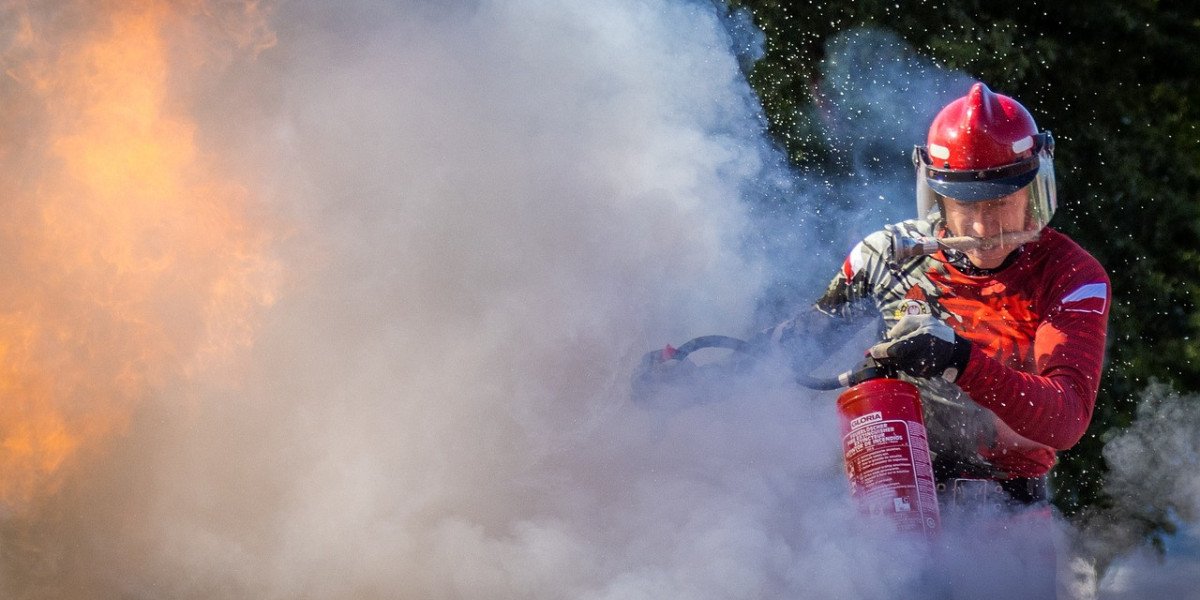A fire extinguisher is one of the most essential safety tools that can make all the difference in preventing small fires from turning into devastating disasters. Whether at home, in the office, or in industrial settings, knowing how to use a fire extinguisher correctly can help save lives, protect property, and prevent environmental damage. In this blog, we’ll explore the different types of fire extinguisher, when to use them, and key safety tips to ensure you're prepared in case of a fire emergency.
What is a Fire Extinguisher?
A fire extinguisher is a portable device designed to put out small fires. It works by expelling a substance—either water, foam, powder, or gas—under pressure to suppress flames. Fire extinguishers are often categorized based on the types of fires they are designed to combat, and understanding these categories is essential for choosing the right extinguisher for different environments.
Types of Fire Extinguishers
Fire extinguishers are classified into several types, each suited for specific kinds of fires. The classification system helps people understand which extinguisher to use depending on the materials involved in the fire. Here are the main types:
Class A – For ordinary combustibles like wood, paper, cloth, and plastics. These extinguishers typically contain water or foam to cool the fire and remove heat.
Class B – For flammable liquids like oil, gasoline, and grease. These extinguishers typically use dry chemical powders or foam to suffocate the fire and prevent re-ignition.
Class C – For electrical fires caused by appliances, wiring, and circuit boards. These extinguishers usually contain non-conductive agents like CO₂ (carbon dioxide) or dry chemicals.
Class D – For combustible metals like magnesium, aluminum, and potassium. These fires require special extinguishing agents like dry powder designed specifically for metals.
Class K – For kitchen fires, particularly those involving cooking oils and fats. These extinguishers are commonly found in commercial kitchens and use wet chemicals to cool and suppress the flames.
When to Use a Fire Extinguisher
Knowing when to use a fire extinguisher can be a matter of life or death. Here are some general guidelines:
Small, contained fires: Fire extinguishers are effective only on small fires in their early stages. If a fire is spreading quickly, don’t attempt to use a fire extinguisher—exit the building and call emergency services immediately.
Before a fire spreads: If the fire is manageable and in its initial stage, using the correct fire extinguisher can prevent it from growing. Always ensure you have an exit route, and never turn your back on the fire.
If you are not at risk: Only use a fire extinguisher if you are confident in your ability to control the fire without putting yourself or others in danger. If at any point you feel unsafe, evacuate immediately.
How to Use a Fire Extinguisher
It’s important to know how to use a fire extinguisher properly. The acronym PASS is a helpful way to remember the steps:
P – Pull the pin: Remove the safety pin from the handle. This will break the tamper seal and allow you to use the extinguisher.
A – Aim the nozzle: Point the nozzle at the base of the fire, not at the flames. This is where the fuel source is, and targeting it is most effective.
S – Squeeze the handle: Squeeze the handle to release the extinguishing agent.
S – Sweep from side to side: Move the nozzle from side to side, covering the base of the fire until it is completely out.
Fire Extinguisher Maintenance and Inspection
To ensure your fire extinguisher will work when needed, regular maintenance and inspection are vital:
Check pressure levels: Many fire extinguishers come with a pressure gauge. Ensure the needle is in the green zone to confirm it's properly pressurized.
Inspect for damage: Look for any dents, leaks, or signs of damage to the extinguisher, and replace it if necessary.
Monthly inspections: Conduct a quick visual inspection each month to ensure the extinguisher is in place, accessible, and in good condition.
Annual servicing: Fire extinguishers should be professionally serviced at least once a year to ensure they are fully functional.
Fire Extinguisher Placement and Accessibility
Knowing where fire extinguishers are located is just as important as knowing how to use them. Fire extinguishers should be placed in easily accessible, visible locations, especially near high-risk areas like kitchens, laboratories, and workshops. They should be mounted on walls at an appropriate height for easy access and regularly inspected.
Key Fire Extinguisher Safety Tips
Know your extinguisher: Familiarize yourself with the types of extinguishers available in your home, office, or workplace, and ensure that the right ones are in place.
Know your limits: If a fire becomes too large or out of control, don't attempt to fight it. Evacuate immediately and call emergency services.
Never leave a burning area: If you're using a fire extinguisher, make sure the fire is completely out before leaving the area. Small flames may reignite if not fully extinguished.
Training: Regular fire safety training and drills are essential for anyone in a high-risk environment. Knowing how to use a fire extinguisher under stress can make all the difference.
Conclusion
Fire extinguishers are indispensable tools in preventing the spread of fires and minimizing damage. By understanding the different types of extinguishers, knowing when and how to use them, and maintaining regular inspections, you can greatly enhance safety in your home, office, or workplace. Remember, the goal is not just to have a fire extinguisher, but to know how to use it effectively and safely. Take the time to familiarize yourself with fire safety protocols, and you'll be well-prepared should an emergency arise.








